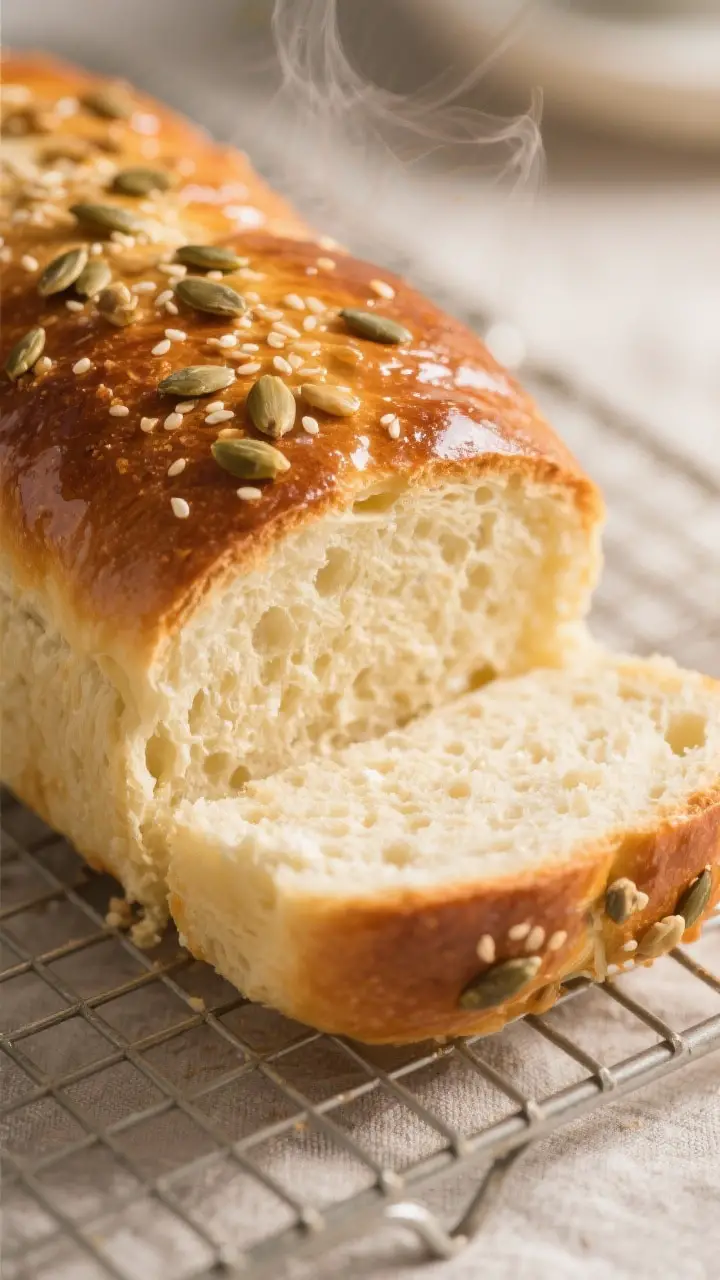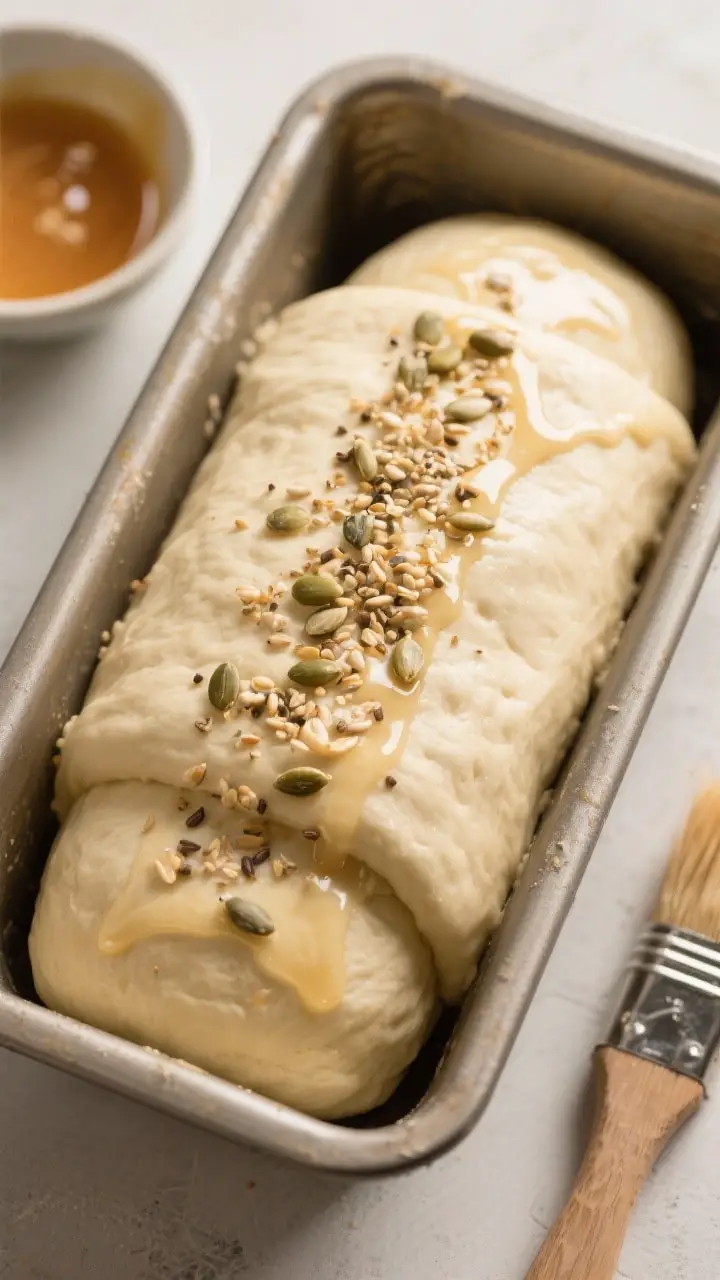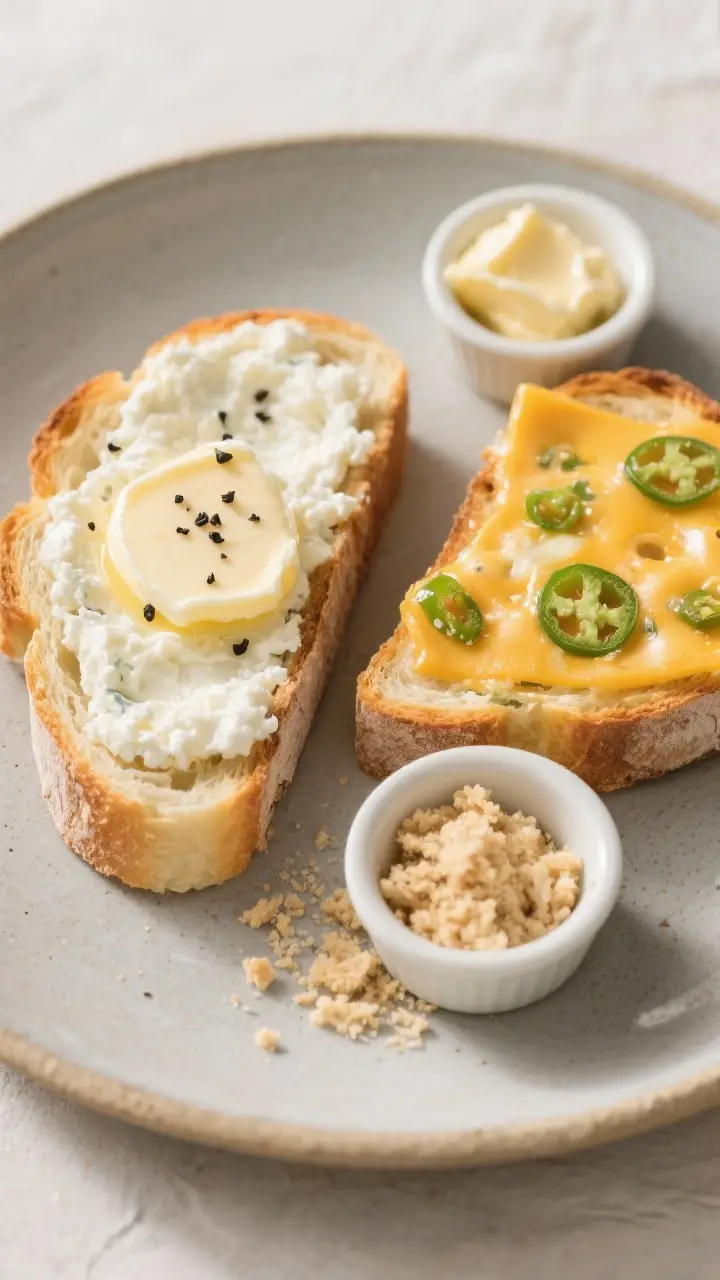You want bread that fuels your day, not just fills a plate. This cottage cheese bread hits like a sneaky cheat code: moist crumb, golden crust, and protein packed without tasting “healthy.” No sourdough starter drama, no 28-step saga. Just a blender, a bowl, and the kind of loaf that disappears in 24 hours.
Make two if you live with other humans.
What Makes This Recipe Awesome

- High-protein, low-fuss: Cottage cheese boosts protein and moisture—no dry, sad slices.
- Beginner-friendly: Forgiving dough that bakes up beautifully even if you’re not a bread wizard.
- Versatile: Toast it, sandwich it, French-toast it, or eat it warm with butter like a civilized rebel.
- Balanced texture: Tender and soft with a light chew. It’s not cake; it’s bread that respects you.
- Customizable: Add herbs, seeds, whole wheat, or go gluten-free with smart swaps.
Ingredients
- 2 1/4 teaspoons (1 packet) instant yeast
- 1 tablespoon sugar or honey
- 1 cup warm milk (100–110°F; dairy or unsweetened almond milk works)
- 1 cup cottage cheese (full-fat or low-fat; small curd preferred)
- 2 tablespoons olive oil (or melted butter)
- 2 large eggs, room temp
- 1 1/2 teaspoons fine sea salt
- 3 1/2 to 4 cups bread flour (or all-purpose; start with 3 1/2 cups)
- Optional add-ins: 2 tablespoons seeds (sesame, sunflower), 1 teaspoon dried herbs, or 1/2 cup shredded sharp cheddar
- For topping: 1 tablespoon milk + 1 teaspoon honey (glaze), extra seeds for sprinkling
Step-by-Step Instructions

- Warm and whisk: In a large bowl, whisk warm milk with sugar and yeast. Let it sit 5 minutes until foamy.If nothing happens, your yeast ghosted you—start over with fresh.
- Blend the creamy stuff: In a blender or with an immersion blender, blitz cottage cheese, eggs, and olive oil until mostly smooth. Curds should nearly vanish.
- Build the base: Add the cottage cheese mixture and salt to the yeast bowl. Stir to combine.
- Add flour gradually: Mix in 3 1/2 cups flour.Switch to a dough hook or turn onto a floured surface. Knead 6–8 minutes, adding up to 1/2 cup more flour as needed. You’re aiming for soft, slightly tacky, not sticky.
- First rise: Shape into a ball and place in a lightly oiled bowl.Cover and let rise in a warm spot until doubled, 60–90 minutes.
- Shape the loaf: Gently deflate. Pat into a rectangle, then roll up tightly from the short end, pinching the seam. Tuck the ends under.Place in a greased 9×5-inch loaf pan.
- Second rise: Cover and let rise until the dough crowns 1 inch above the pan, about 35–55 minutes. Preheat oven to 350°F (175°C).
- Optional glaze and seeds: Brush top with the milk-honey mixture. Sprinkle seeds if you’re feeling extra.
- Bake: Bake 32–38 minutes until deeply golden and the internal temp hits 195–200°F.Tent with foil after 25 minutes if browning too fast.
- Cool correctly: Rest in pan 10 minutes, then transfer to a wire rack. Cool at least 45 minutes before slicing. Yes, waiting is pain.Worth it.
Storage Tips
- Room temp: Wrap in a clean towel or store in a bread box for 2–3 days. Avoid the fridge—it dries bread faster than your ex’s texts.
- Freeze: Slice, then freeze in a zip-top bag with air pressed out. Lasts up to 2 months.Toast straight from frozen.
- Revive: Lightly toast or warm in a 300°F oven for 6–8 minutes to bring back the soft interior and crisp edge.

Why This is Good for You
- Protein bump: Cottage cheese and eggs add meaningful protein, helping with satiety and muscle repair.
- Better carbs: Homemade bread means fewer additives and more control over ingredients and sodium.
- Healthy fats: Olive oil contributes monounsaturated fats for heart health, IMO a smart swap for some conventional loaves.
- Micros matter: Dairy brings calcium and B vitamins; seeds or whole grains add fiber and minerals.
What Not to Do
- Don’t kill the yeast: Milk hotter than 115°F can sabotage your rise. Use a thermometer or your finger—warm, not hot.
- Don’t flood with flour: Over-flouring = dry, dense loaf. Keep the dough slightly tacky; trust the process.
- Don’t skip the cool-down: Cutting too soon smooshes the crumb and traps steam.Patience is delicious.
- Don’t overbake: Drying it out defeats the cottage cheese magic. Use that internal temp target.
- Don’t ignore salt: It’s flavor and structure. Cutting it too much makes bland, floppy bread.
Variations You Can Try
- Herb garden loaf: Add 1–2 teaspoons dried Italian herbs plus a crack of black pepper.Killer for grilled cheese.
- Seed-crusted: Mix 2 tablespoons each sesame and sunflower into the dough. Roll the shaped loaf in seeds before the second rise.
- Cheddar-jalapeño: Fold in 1/2 cup sharp cheddar and 1–2 tablespoons minced pickled jalapeños. Brunch hero status unlocked.
- Half whole-wheat: Swap 1 1/2 cups of the white flour for whole wheat.Add 1–2 tablespoons extra milk if dough feels stiff.
- Gluten-free route: Use a 1:1 gluten-free bread flour blend and add 1 teaspoon xanthan gum if not included. Expect a slightly different texture but solid results.
- Garlic-parmesan swirl: Before rolling the loaf, brush with a little olive oil, sprinkle 1/4 cup grated parmesan and 1 teaspoon garlic powder, then roll and proceed.

High-Protein Cottage Cheese Bread
Equipment
- Blender
- Mixing Bowl
- 9×5-inch Loaf Pan
Ingredients
Main Dough
- 2 1/4 tsp instant yeast (1 packet)
- 1 tbsp sugar or honey
- 1 cup warm milk (100–110°F; dairy or unsweetened almond milk)
- 1 cup cottage cheese (full-fat or low-fat; small curd preferred)
- 2 tbsp olive oil (or melted butter)
- 2 large eggs room temperature
- 1 1/2 tsp fine sea salt
- 3 1/2 to 4 cups bread flour (or all-purpose)
Optional Add-ins
- 2 tbsp seeds (sesame, sunflower)
- 1 tsp dried herbs
- 1/2 cup shredded sharp cheddar
Glaze & Topping
- 1 tbsp milk for glaze
- 1 tsp honey for glaze
Instructions
- In a large bowl, whisk warm milk with sugar and yeast. Let it sit 5 minutes until foamy.
- In a blender, blend cottage cheese, eggs, and olive oil until mostly smooth.
- Stir the blended mixture and salt into the yeast mixture to combine.
- Mix in 3 1/2 cups flour. Knead 6–8 minutes, adding up to 1/2 cup more flour as needed. Dough should be soft and tacky.
- Shape into a ball and place in an oiled bowl. Cover and let rise until doubled, 60–90 minutes.
- Deflate dough gently, shape into a rectangle, roll tightly from the short end, and tuck ends under. Place in a greased 9×5-inch loaf pan.
- Cover and let rise until dough crowns 1 inch above the pan, 35–55 minutes. Preheat oven to 350°F (175°C).
- Optional: Brush top with milk-honey mixture and sprinkle seeds.
- Bake for 32–38 minutes until deeply golden and internal temp is 195–200°F. Tent with foil after 25 minutes if needed.
- Cool in pan for 10 minutes, then transfer to wire rack and cool at least 45 minutes before slicing.
Notes
Nutrition
FAQ
Can I use Greek yogurt instead of cottage cheese?
Yes, but the texture changes slightly. Use full-fat Greek yogurt and reduce the milk by 1–2 tablespoons to avoid an overly slack dough.
The loaf will be a bit tangier and slightly less airy.
Do I need a stand mixer?
Nope. Hand-kneading works. It might take an extra couple of minutes, but consider it free forearm day.
Why did my bread turn out dense?
Likely too much flour, underproofing, or old yeast.
Aim for a soft, tacky dough, let it double on the first rise, and make sure your yeast is alive and well.
Can I make this dough ahead?
Yes. After the first rise, shape and refrigerate overnight, tightly covered. Let it sit at room temp 45–60 minutes before baking so it can finish the second rise.
Is this good for sandwiches?
Absolutely.
It slices cleanly once fully cooled and stands up to fillings. Toast first for hot sandwiches or melts—elite move, FYI.
How do I make it dairy-free?
Use dairy-free milk and swap cottage cheese for a thick dairy-free yogurt or silken tofu blended smooth with 1–2 teaspoons lemon juice. Flavor shifts slightly but still works.
What if I only have active dry yeast?
Bloom it in the warm milk with sugar for 10 minutes until foamy, then proceed.
Rise times may be a touch longer.
Can I bake it without a loaf pan?
Yes. Shape into a tight oval and bake on a parchment-lined sheet. Start checking at 28–30 minutes; it’ll spread a bit but still be tasty.
My Take
This cottage cheese bread punches above its weight class: bakery-level crumb with weeknight effort.
It’s the bread I hand to skeptics who think “protein bread” means cardboard. The formula is flexible, the flavor is mild and buttery, and the slices toast like a dream. Make it once, and you’ll start planning meals around the loaf, not the other way around.












